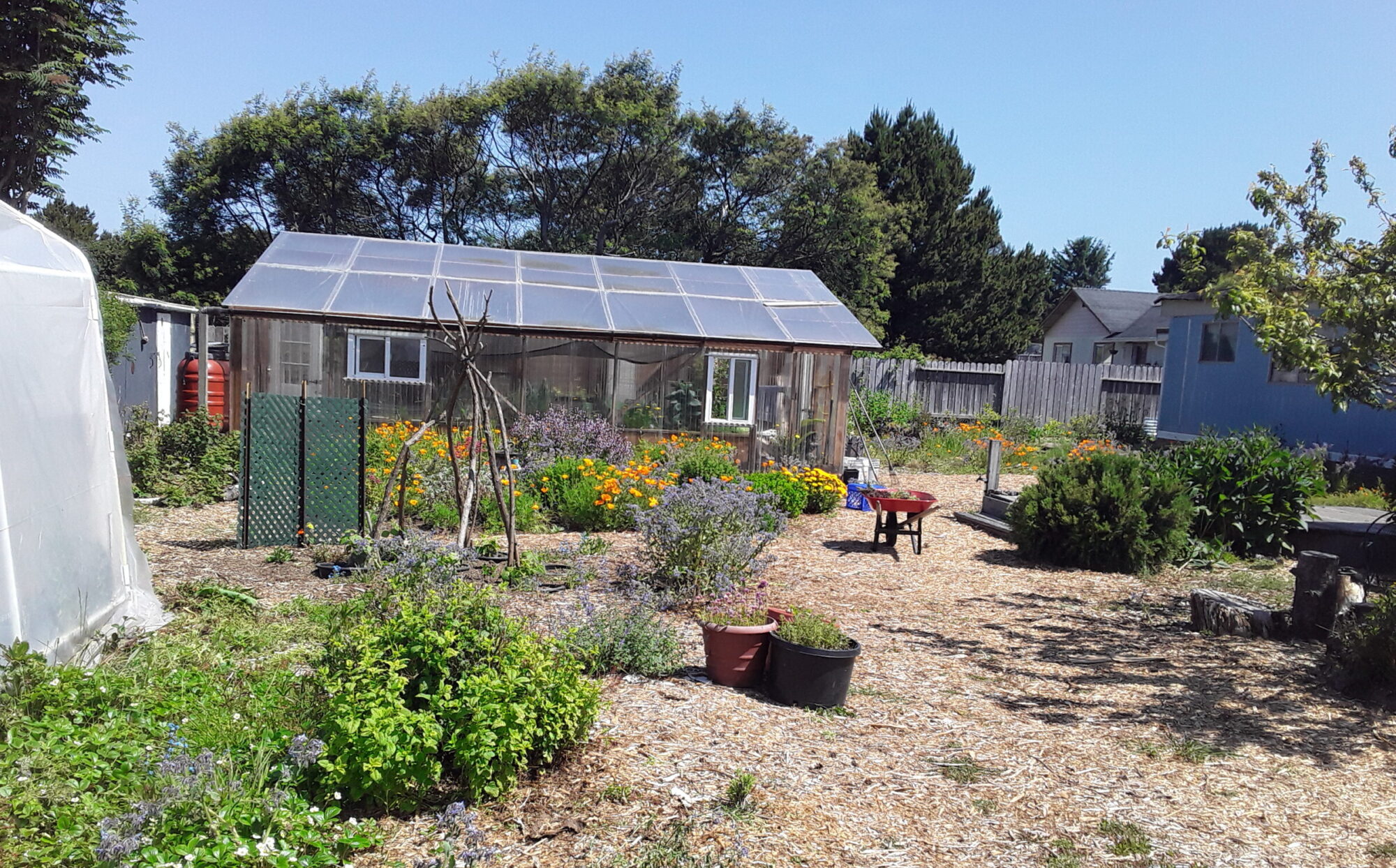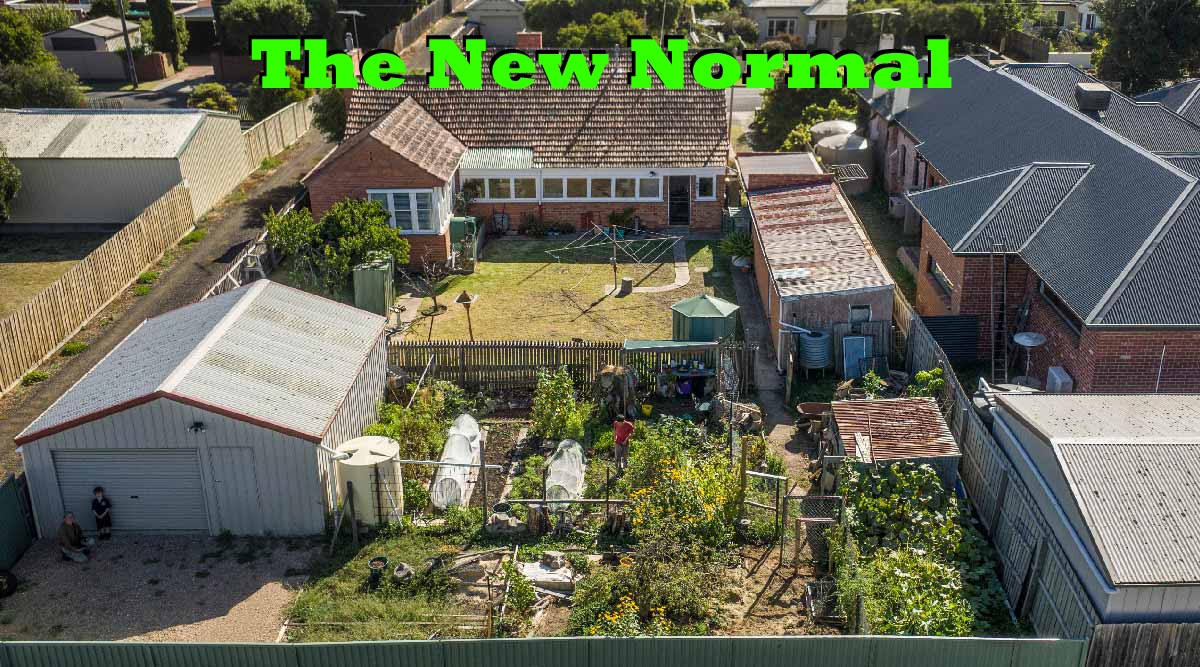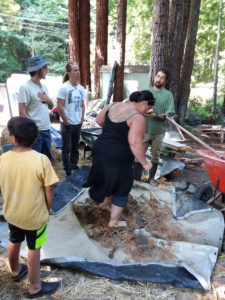By Steven Saint Thomas & Trudy Thomas
The whole neighborhood is now sheltering in place. Everyone’s looking for something to do or catching up on their existing to-do lists, while we wait for the world to get back to normal.
We’re using lots of post-layoff time to work on our permaculture homestead in Humboldt County, Calif. We’re wrapping up the sheet-mulch on about a quarter-acre and building garden beds – even planting! Our neighbors, all unseen on the other sides of the fences, are out filling the air with the sound of power mowers and the smell of new-mown grass.
Ironic – they’re out farming the grass that we’re trying to kill. It’s not that we hate grass, but we can’t eat it. We need to transform my grass-dominated yard into a place where fruit, berries, vegetables, garlic, herbs and pollinators can grow without the competition. Permaculturists often use sheet-mulching to create a fresh palette of topsoil on which to design self-reliant food systems.

We are all farmers, it’s just that we’ve spent most of our lives up to now farming dollars. The New Normal will be farming our own food!
I’m guessing my neighbors are expecting the Old Normal – back to fully stocked grocery stores, plenty of gasoline and mowing the lawn every other Sunday. The current coronavirus pandemic has brought home what permaculturists have been saying for 40 years. The normal we grew up with, powered by fossil fuels and other non-renewable natural resources, is coming to an end. The future will be different and we need to be ready for that.
The coronavirus has put the entire world on pause – an unprecedented opportunity to make a course correction!
As permaculture co-founder Bill Mollison put it: “The greatest change we need to make is from consumption to production, even if on a small scale, in our own gardens. If only 10 percent of us do this, there is enough for everyone.”
Our family is seven years into a 10-year plan to get ready for the future. We’re not ready yet, but if we keep our hands to the plow, we just might get there. We’d like to offer the following New Normal steps based on our recent adventures in permaculture.
1. Start growing food now. If you are currently farming grass, stop and let it die. Grow food – some is better than complete dependence on grocery store chains. If you have land, start planting something you will actually eat – potatoes, onions, lettuce, zucchini. If you don’t have land, grow something in containers on the porch or in a window sill. Don’t let another spring go by without planting new food sources somewhere within your reach!
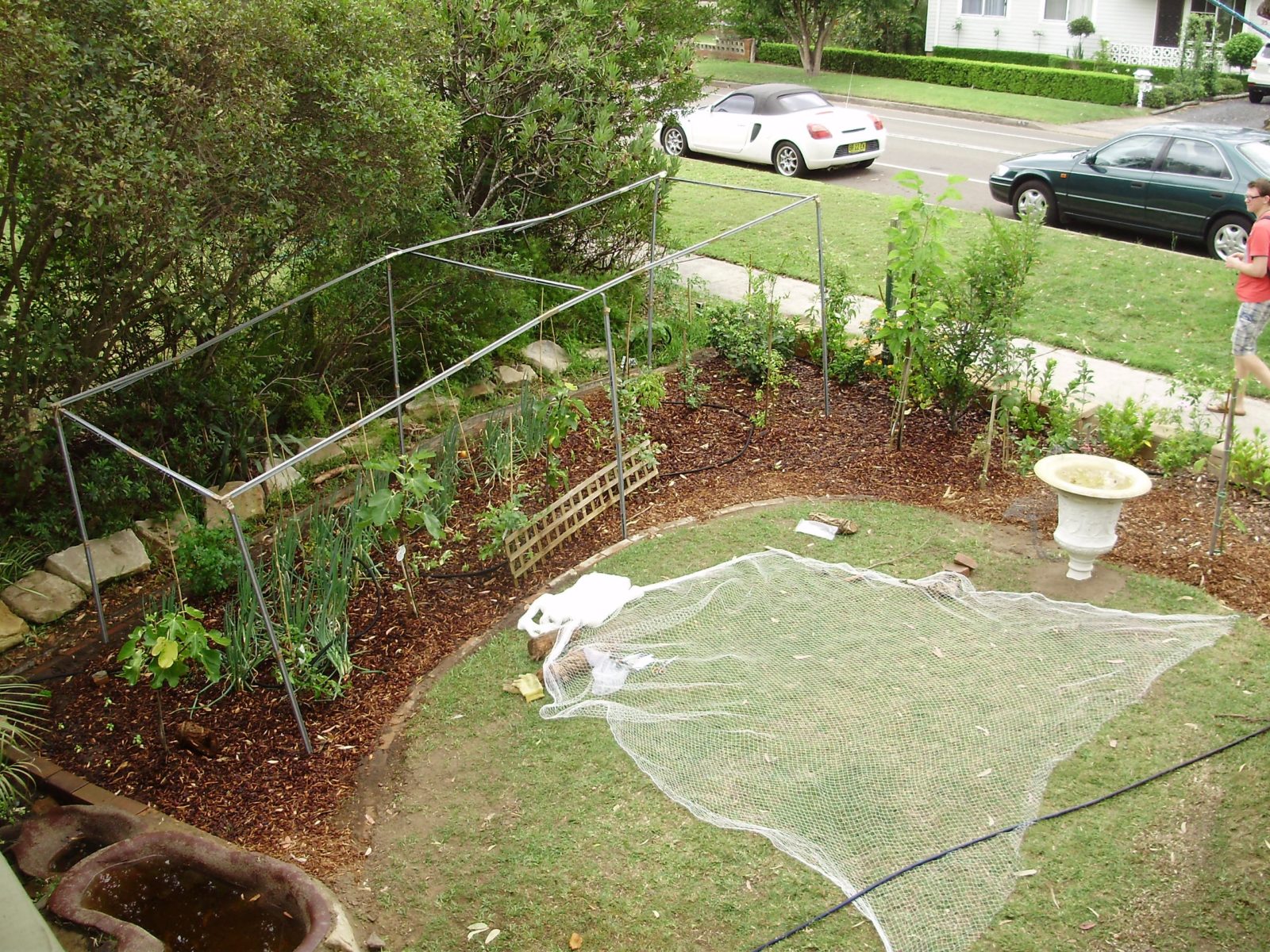
2. Look for ways to grow more food. Already growing? Need more space for gardens? Get rid of your lawn and plant – edible landscapes are gorgeous and have far greater value than grass. How about a greenhouse for starts and extending the growing season? Maybe you have a neighbor with land but no skills for gardening – offer to help out. Find a school, church or community garden that needs some tender loving care. Aim to grow 10 percent more food this year than you did last year.
3. Start storing water. Rainwater can be stored in the topsoil as well as in containers. Mulch helps catch rain and minimize evaporation. Swales (Australian for “ditches”) can also capture runoff, spread and sink water, and prevent erosion. Here’s a swale we dug that moves water running down the street into our yard to irrigate trees and hedges. Rainbarrels can store water from rooftops for times when it doesn’t rain.

4. If you can, move to a place where you can grow more food and store more water. If it doesn’t rain much where you live, it’s probably time to move! Big cities in the Western U.S. are sucking the life out of the Colorado River. Ideally, find a piece of land and devote most of it to food production (more land, less house). Own it without a mortgage if at all possible – liquidate any Wall Street assets (401ks, IRAs, mutual funds) you have and pay off your mortgage. Move in with other family members. Buy or build a tiny home on family property. Pool your resources with family members and buy land, or pay off mortgaged property (Sorry, but working with family will be part of the New Normal. Swallow your pride and do it for your kids.)
5. Connect with neighbors and find ways to work together for sustainability. Explore sharing rides – complete with face coverings! – or get/share a bike (and drop that gym membership). Share tools, seeds, labor and the harvest.
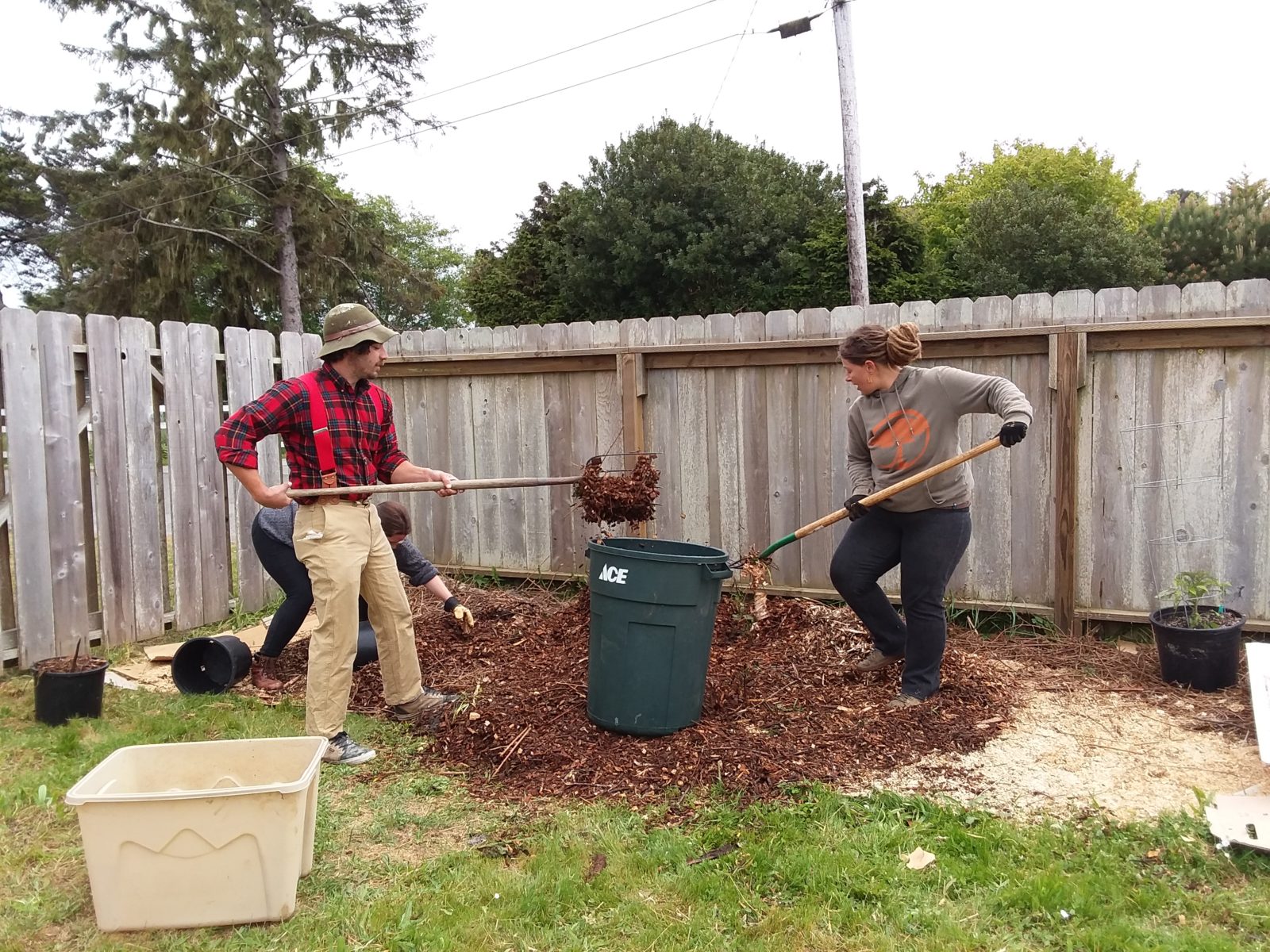
6. Get ready for the long emergency. The New Normal means the Old Normal won’t be coming back. The endless-growth economic model won’t be coming back. The consumer will need to become a producer. It might be the next pandemic (yes, there will be more) or utilities going bankrupt, trucking companies folding or collapse of ecosystems… imagine a sheltering in place that doesn’t end in our lifetimes. Build diverse revenue streams: Evaluate your skills and sell or trade those skills with the local community. Reduce grid-use: Transition to alternative sources for lights, water and heat. Get rid of your power-sucking clothes dryer and put up a clothesline. These are changes we can make while there is still time.
7. It is easier to stay positive when you connect with nature. The New Normal needs to be a world where humans are a part of nature, not above and beyond it. This is why indigenous people survived for eons while empires rose and fell. Back to Bill Mollison: “Sitting at our back doorsteps, all we need to live a good life lies about us. Sun, wind, people, buildings, stones, sea, birds and plants surround us. Cooperation with all these things brings harmony; opposition to them brings disaster and chaos.”
We are all farmers – of something. We will reap what we sow. Happy growing!
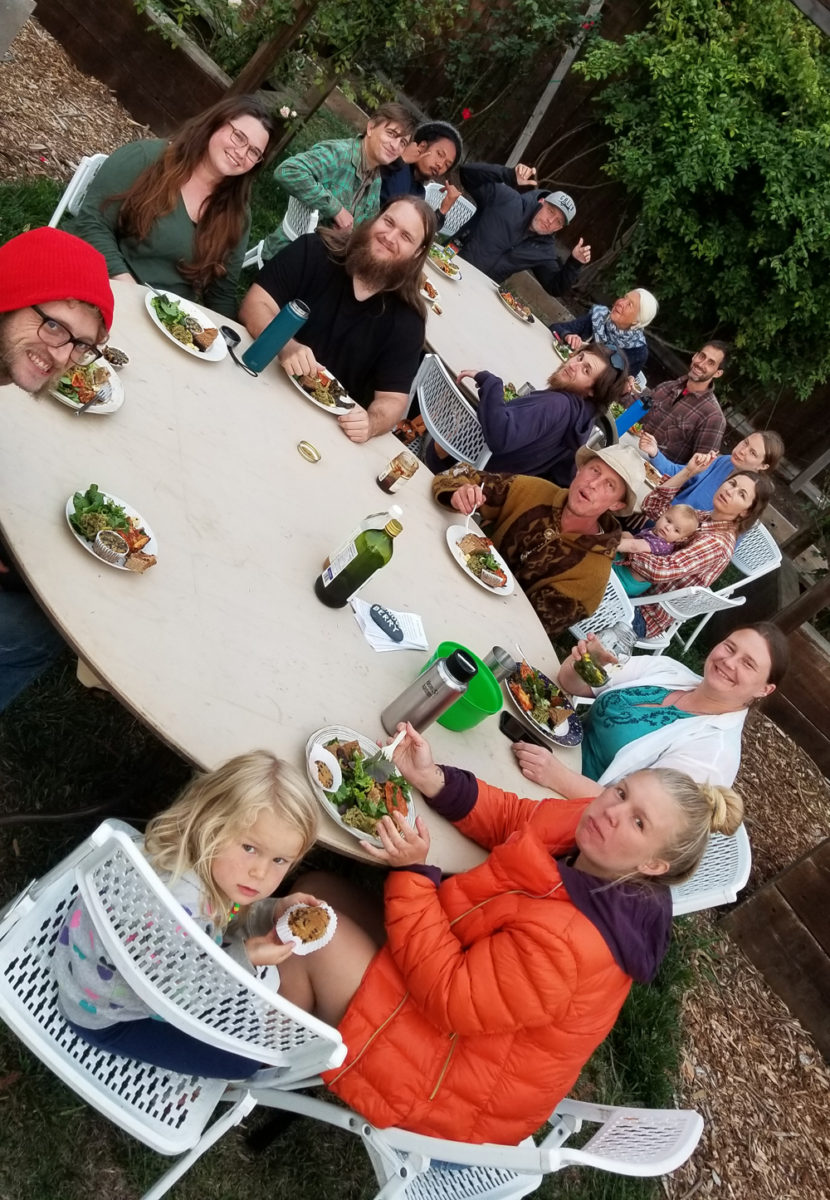
If you’ve read this far, you might be interested in a relatively new documentary on (mostly) East Coast permaculture – from rooftop gardens to suburban lots to farms. It’s called “Inhabit” – beautifully done!
We’re also an organizing “Adventures in Permaculture: Saturday Night Thrive” check-in via Zoom. Hope we can connect soon!
